March 31 (Lunar calendar: Leap February 10), 2023 Friday | Dawnxisoul393art
《Big Buddha in the sunset》, painted by dawnxisoul393
The world's tallest outdoor bronze seated Buddha (First part)
- Tian Tan Buddha & Po Lin Monastery in Hong Kong
That morning, as planned, we and our daughter Dawnxi went on a pilgrimage and sketching and painting at the Po Lin Monastery in Ngong Ping. We took a bus from Mui Wo Centre straight to Ngong Ping. The bus stopped a few times for the first few kilometers out of the station to pick up a few scattered passengers and then drove all the way into the mountains. The windows were full of greenery and we were so happy to be close to nature that we were busy enjoying the scenery outside the windows. The mountain was getting steeper and steeper, the road was narrow and rugged, and many places are barely enough for two cars to meet. The bus coiled up the mountain, the driver sped along the narrow mountain road with ease. Soon saw the road was separated from half of the road in the repair, set up temporary traffic lights, told drivers that the opposite side of the car coming, and asked the driver to stop and wait. The good thing was that there were not many cars in the mountains, and drivers were able to take the initiative to give way, did not cause traffic jams, several short waits also did not delay the trip.
We closed our eyes, breathed deeply, and seemed to smell the scent of nature, refreshing our souls. Nature, like a magical wizard, brings us many surprises when he gently touches the magic wand. The mountains and rivers are so magnificent that we can feel their generosity at any time. The coolness of autumn mornings made our minds undulate and fluctuate with ripples. Green mountains, green water, birdsong, and flowers surround us, we could find them in front of us. Nature is our invisible guardian, close to nature, feel nature, open our arms and embrace nature tightly. To be grateful to nature and to cherish nature is to realize the true meaning of eternal life. In nature, always keep a grateful heart, even if you are as humble as grass, you will still have the fragrance of grass.
The higher the bus climbed, surrounded by layers of mountains, near the trees were verdant, and the distant mountains were cloudy. Sometimes the peaks and valleys of the gaps between the mountains suddenly reveal the bay, the smokes, and waves, unfathomable. If we compare Hong Kong Island and Kowloon to a beautiful mountain bonsai, Lantau Island is an absolute realm of majesty, lofty between heaven and earth. The bus swooped down and burst out of a green tunnel surrounded by dense woods, suddenly opening up to a wide-open space. The bus continued and soon reached Ngong Ping.
On the left were several shops, but on the right, we had to look up. On a majestic mountain top, we saw the familiar Buddha statue that we hadn't seen for a long time. We were so excited, Ngong Ping, we were back. Po Lin Monastery, we were back, the Buddha, we were back, and this time, we were back, with our baby girl, Dawnxi. We couldn't wait to get off the bus and head straight for the peak where the Buddha is located. It was an independent peak with long stone steps leading up to the top. Looking up, we saw the Buddha with his eyes slightly closed and his ears hanging over his shoulders, sitting on the lotus platform, majestic and solemn, with the sunlight reflecting on the Buddha through the mist between the mountains, with clouds and purple air rising. The statue, called the Tian Tan Buddha, is the tallest outdoor bronze seated Buddha in the world.
The Buddha was made of 202 pieces of bronze welded together and weighed 250 tons. The statue was 23 meters tall, with a total height of about 34 meters for the lotus seat and pedestal. The unique color and texture of bronze added to the grandeur and majesty of the statue, which was free of dazzling colors and had a dignified style. When we arrived at the foot of the hill where the Buddha statue was located, we walked around and looked up for fear of disturbing the Buddha's purity, but then we looked at the Buddha's generous and compassionate smile and were relieved. No matter how much hustle and bustle was caused by the many visitors and believers every day, the Buddha forgave with his compassionate and generous heart. The Buddha's face was like the full moon, his forehead was wide and flat, and his ears were hanging from his shoulders, revealing that the Buddha is blessed with full wisdom and perfection. He smiled with compassion and made the hearts of all beings happy.
The Buddha sits cross-legged on the lotus platform, like a lotus flower emerging from the sludge, symbolizing the Buddha's purity and immaculateness, his ability to penetrate into the five foul worlds and help all sentient beings who are difficult to subdue. The statue was rich and peaceful in form, with a lofty and delicate appearance, and it was the reflection of the Buddha's spirit of compassion and joy. The Buddha's kind face is smiling, making all people happy. The flesh bun on the top of the Buddha's head represents the perfection of the Buddha's wisdom and his composure and calmness in proclaiming truth and justice to all sentient beings. The Buddha's lotus eyes and eyebrows are like the first moon, with soft lines, symbolizing the Buddha's compassionate eyes that look at all beings. The sitting position of the Buddha is called cross-legged, also known as full cross-legged. It is said that when Sakyamuni entered meditation under the Bodhi tree and practiced righteousness, he was sitting in this position.
At the front of the Buddha, there are 6 bronze statues in a dancing posture, called "Six Heavenly Mothers Offering". The offerings include flowers, incense, lamps, paints, fruits, and music, representing the six parameters (giving, discipline, patience, refinement, meditation, and wisdom). Practitioners who practice the six parameters will be able to reach the shore of unborn and undying nirvana in the ocean of suffering.
Constructed in 1989, the Tian Tan Buddha of Po Lin Monastery combines the ancient and modern Buddhist statue art, ancient bronze craft traditions, and the essence of modern science and technology, and is a perfect combination of Buddhist spirit and modern civilization. After 30 years, the Tian Tan Buddha has been exposed to the natural environment for years and the surface layer has been naturally corroded. At present, the vast majority of the repair work has been completed. We prayed silently with our daughter in front of the Big Buddha that all repairs to the Buddha would be completed soon and that the Buddha would continue to protect Hong Kong and its residents. After the pilgrimage to the Big Buddha and the painting of the Buddha's dignity, we started walking towards the Po Lin Monastery in Hong Kong, where the Big Buddha belongs. The Po Lin Monastery in Hong Kong is known as the "Southern Heavenly Buddha Land" and is one of the four major Zen groves in Hong Kong.
The overall architecture of Po Lin Monastery was majestic and magnificent, with vermilion doors, green tiles, gold and blue splendor, and a dense shade covering the temple with ancient meaning. The temple complex was located in the middle of Hong Kong's Lantau Island, between Phoenix Hill and Mount Maitreya on the Ngong Ping terrace, facing the Buddha and overlooking the sea.
Since its founding in 1906, Po Lin Monastery adopted the basic shape and scale of a complete monastery in the 1950s. after the 1960s, as Hong Kong's economy grew and the size of the congregation expanded, Po Lin Monastery entered another phase of development in terms of form and architectural style. The construction of the Great Buddha Hall was planned in 1963 and completed in 1970 in the form of an oriental palace-style building from the 14th to 17th centuries. Planning for the Hall of Ten Thousand Buddhas began in 2000 and was completed around 2012. It is in the form of a classical pavilion in the Oriental style of the 10th to 13th centuries and contains modern multi-purpose facilities such as a Buddhist hall.
In the process of promoting Buddhism, the architecture of the temple transformed from the local folk architectural style to the form of a palace building. After a century of development, it has entered a new stage. In the temple's backyard is a meeting hall, which is carefully furnished with hundreds of tables and chairs, each with scriptures. Following the lecture hall are rooms that introduce the Buddhist culture and history of Po Lin Monastery, and a row of hostels where students studying the scriptures can stay.
By noon, we went to the temple's "fasting hall" for lunch. Shortly after, vegetarian dishes and soup, a small pot of rice, and a jug of water were brought to us. The food was bright and colorful and the meal was simple but delicious. The monks of the temple eat gourd and pickled radish for porridge in the morning and yellow rice and soup at noon. The dining hall of the temple is responsible for feeding not only the monks of the temple but also monks and travelers from all over the world, so the vegetarian food in the dining hall is becoming more and more refined. As early as the pre-Qin period, there were "vegetarian monks", and monastic vegetarian food developed and became unique in people's dietary life. Vegetarian cuisine is an important part of culinary art, and its distinctive features are seasonal foods, well-chosen materials, exquisite skills, a wide variety, and unique flavors. Although the methods of making vegetarian food vary from temple to temple, they all have the characteristics of freshness and elegance.
In our sketch conceived and completed acrylic painting "Big Buddha in the sunset", the koi in front of the Buddha symbolizes freedom and transcendence, representing abundance and peace. The koi is a symbol of insight into the nature of things and superhuman wisdom, thus the koi has the meaning of the eye of wisdom. In Buddhism, the koi is a metaphor for the practitioner who transcends the world and is free, symbolizing the realm of liberation, as well as restoration, eternal life, and rebirth. The koi's eyes are always open. The koi's eyes symbolize the eyes in the Buddha's mind. In the sculpture, the Buddha always seems to be thinking with his eyes closed, but the eyes in the Buddha's mind are always open. This symbolizes that the Buddha in Hong Kong always takes care of all sentient beings and never leaves.
With joy, we finished the day's plan, which made us feel very happy. Thinking of the hustle and bustle of downtown Hong Kong, the skyscrapers of Central and the thousands of stores in Causeway Bay, Hong Kong, while giving people endless prosperity, infinite dreams, and endless luxury, also has a piece of pure land away from the hustle and bustle - the Po Lin Monastery and the Tian Tan Buddha.












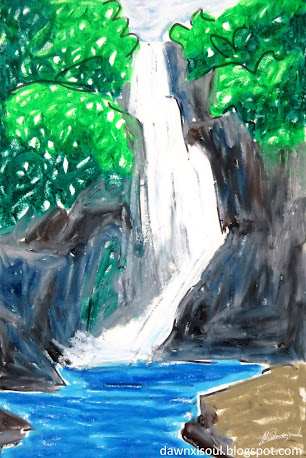
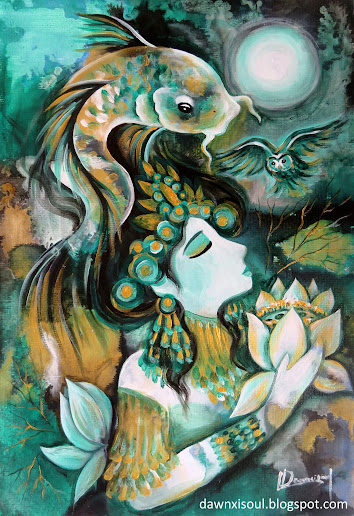

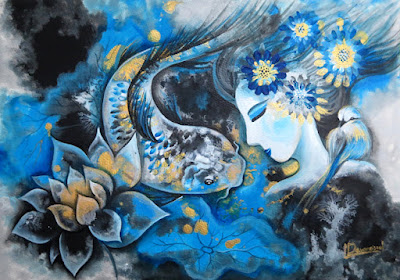
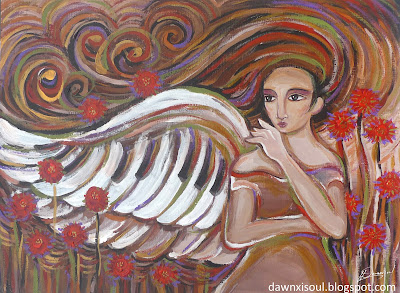
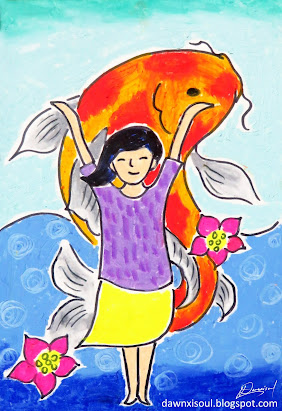


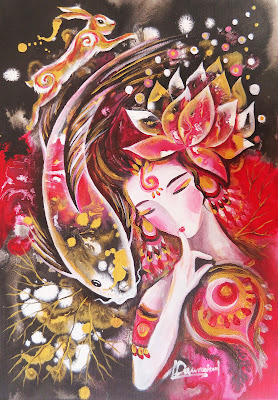
Comments
Post a Comment